-
Content Count
111 -
Joined
-
Last visited
Posts posted by Sally Johnston
-
-
Most people would agree that they need more time in a day. As our lives get busier, finding the time to prepare healthy meals for the week can be difficult. We often talk about preparing meals in bulk and freezing, but having to defrost the same meal over and over can become boring and lose its appeal.
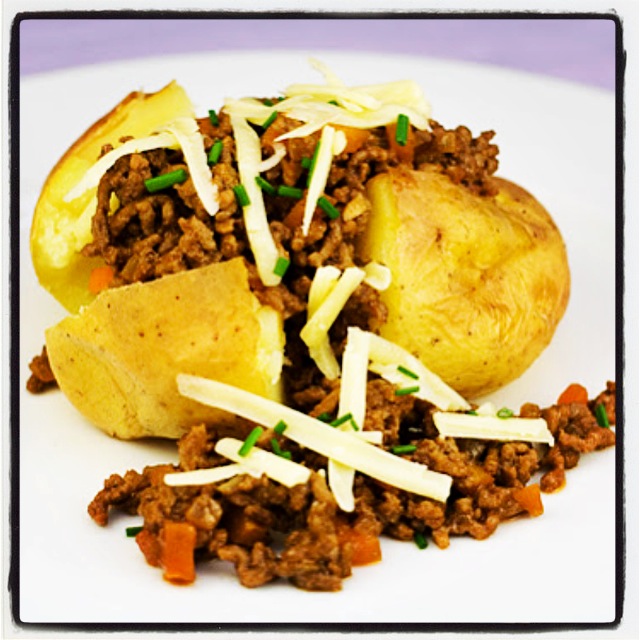
To overcome this meal time monotony I like to freeze ‘meal bases’ that I then present in a variety of ways to create different meals.
These ‘meal bases’ are Protein based making them perfect for managing meals post weight loss surgery. Below are three options I love to have on hand in the freezer.
Option One: Bolognaise Sauce
Make a large batch of your favourite bolognaise sauce (don’t forget to grate in a few vegetables to boost nutrition) and freeze in individual or family size portions.
- Serve with a small portion of Pasta (try risoni if you find pasta hard to tolerate).
- Serve over couscous with a small side salad.< br>
- Pour over a baked potato and top with grated cheese and Greek yoghurt.
- Pop in a wrap with shredded salad and cheese.
- Serve on a grainy slice of toast – Burgen is a great option at approximately 4-5g protein per slice (depending on the variety).
Option Two: Mexican Style chicken Mince
Cook onion, garlic and grated carrot with ground cumin and coriander. Add lean chicken mince and brown. Add one drained can of five bean mix and pour over a jar of your favourite salsa. You can add spinach, peas, mushrooms or any other of your favourite vegetables. Don’t be afraid to add some extra salsa if you need a little more moisture.
- Place mixture into halved red capsicums and bake – top with avocado, Greek yoghurt and chilli flakes if you enjoy a little spice.
- Serve in a taco shell with shredded/diced salad.
- Serve in soft tortillas with shredded/diced salad.
- Serve over ‘zucchini pasta’ (using a vegetable spiralizer).
Option Three: Tandoori Chicken
Marinate chicken tenderloins or chicken thigh fillet in a mixture of tandoori paste and Greek yoghurt.
- Serve in wraps with raita, cucumber, carrot, coriander and chilli.
- Serve with rice and steamed vegetables.
- Top pizza base with mango chutney, add cooked chicken, red onion, spinach, chopped raisins, cashew nuts and cheese. Bake in the oven, then sprinkle with fresh coriander and extra Greek yoghurt.
- Add to a salad of cucumber, carrot, coriander, mint and cashews. Dress with a mixture of Greek yoghurt, mango chutney and lemon juice and top with microwaved pappadams.
Happy cooking!
- Serve with a small portion of Pasta (try risoni if you find pasta hard to tolerate).
-
Mornings are typically a hectic time in most households. The snooze button on the alarm is tempting and time seems to slip away with all jobs to do before you head off to work. Too often, thinking ahead and planning something suitable for lunch is not part of the busy morning schedule. Lunchtime rolls around and you are left heading to the local deli, bakery or café, navigating menus and trying to dodge the many tempting options on offer. Not only does this cycle take its toll on your wallet, but also makes it very hard to stay on track with your health goals.
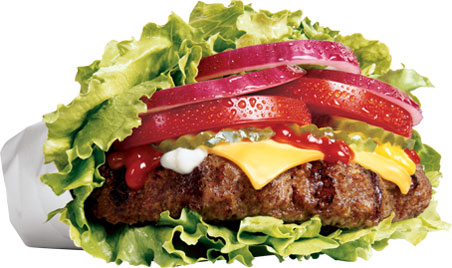
Now is the time to step out of the above cycle and start planning and preparing some tasty, fresh and healthy weight loss surgery friendly lunches. The trick is to PLAN AHEAD, so that all you have to do during the morning rush is ‘grab and go’, making taking your lunch to work the easy option.
To ensure your lunch is going to keep you satisfied, use the following formula:
Prepare Ahead Options
I like to put time aside on a Sunday to prepare lunch items for the week ahead: salads, frittata, mini quiches, meatballs and patties all work well.
Some ideas to get you started include:
- Rice salad: Combine prepared ‘Rice Plus’ (a blend of white and black basmati rice, quinoa, barley and other grains), finely diced capsicum and celery, dried cranberries and mixed seeds (including sunflower and pumpkin). Dress with soy, fresh ginger, lemon and a little oil and top with a grilled chicken tenderloin.
- Meatballs: Prepare lean mince, chicken or turkey meat balls and bake in the oven. These can be frozen then taken for lunch with a fresh prepared salad.
- Vegetable and egg crustless quiche: Grate zucchini and carrot, dice capsicum, Tomato and mushroom and place in baking dish. Pour in a tub of cottage cheese, half a cup of grated cheese and a mixture of 6 eggs with one quarter cup of low fat milk. Bake for 30 – 40 minutes until golden.
Leftovers
Leftovers can make great lunches, when serving up your dinner get into the routine of dishing up an extra serve into a container ready for the next day – just watch your portion.
Grab and Go
There are lots of options you can either have on hand at work or quickly grab in the morning for days you haven’t been able to be prepared. Following are some ideas to get you started:
- Grainy crackers with:
- small (approximately 100g) tin of flavored tuna
- cottage cheese
- sliced cheese
- nut paste
- hummus.
[*]Wrap or grainy bread with:
- small (approximately 100g) tin of flavored tuna
If you need Snacks over the day don’t forget to take these too, or that vending machine/charity basket/staff room cake can undo all your hard work. Some ideas to get you started include:
- fruit
- yoghurt
- 30-40g nuts
- hard- boiled egg
- cheese and crackers.
- Rice salad: Combine prepared ‘Rice Plus’ (a blend of white and black basmati rice, quinoa, barley and other grains), finely diced capsicum and celery, dried cranberries and mixed seeds (including sunflower and pumpkin). Dress with soy, fresh ginger, lemon and a little oil and top with a grilled chicken tenderloin.
-
As Australians, we love a summer barbeque! We thought we would share our tips for all the barbeque fans out there.

Summer in Australia means barbeque time! We love to entertain and there is nothing more enjoyable than catching up with friends and family and enjoying a good barbeque. However following weight loss surgery many of our favourite barbeque foods are those that can be more challenging to tolerate; grilled meats, chicken, sausages, bread, sauce and salads fill plates and soft drink, beer and wine are plentiful. The buzzing social aspect of barbeques can also mean the focus on your eating technique is not as sharp. Due to these challenges, some people may find invitations to barbeques make them feel uneasy.
With some forward planning in place and an awareness of common barbeque traps, there is no reason you shouldn’t be welcoming your next invite.
Common Barbeque Trap 1: Dry, overcooked meat and chicken
We have all been there, you head over to the grill to see a pile of meat looking rather dry and shriveled – no matter how much you chew this, or how much sauce you add there is just no way you are going to tolerate it.
So how do you manage this?
- Offer to take something to contribute to the grill that is will be more tender when cooked and easier to tolerate:
- Make some lean minced meat patties (adding plenty of egg and relish to your mix to ensure they stay moist).
- Marinate chicken thigh fillets and thread onto skewers.
- Wrap salmon fillets in foil with lemon and herbs and pop on the grill near the end of the cooking time.
- Tenderise some good quality steak with marinade and again pop on the grill, again near the end of cooking.
Common Barbeque Trap 2: You overload your plate and push your capacity
With the wide array of choices at a BBQ it can be tempting to have a little bit of everything, leading to a plate that is overflowing.
To manage this:
- Make sure you use a side plate/small plate.
- Fill half of this with Protein, this may mean you only select one to two of the options on offer. Pick your favourite salad items to fill the other half of your plate – avoid those drowned in creamy dressings.< br>
- Avoid the bread and butter.
Common Barbeque Trap 3: You forget to focus on your eating technique
It can be very easy to be engaged in conversation and forget to eat slowly and chew well at barbeques, yet focusing on these fundamentals can be the difference between a successful outing and one that sends you home feeling poorly.
To manage this:
- First and foremost, ensure you sit down to eat.
- Cut your food into very small pieces, chew each mouthful well and take time between mouthfuls.
- Stop when you are satisfied and remember this may be before your plate is empty.
Managed well, barbeques can be both an enjoyable and healthy part of your social calendar this summer. Just be aware of these common traps and plan ahead to avoid them.
- Offer to take something to contribute to the grill that is will be more tender when cooked and easier to tolerate:
-
Think back over the past week – how many times have you been on the scales? Once per day, twice per day, or multiple times per day???? Now answer this; how do you FEEL after you see the result? Are the scales playing a positive or negative role in your weight loss surgery journey?
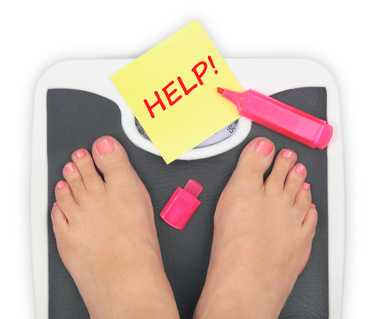
Scales can leave us feeling frustrated, confused, unmotivated and unsuccessful – our entire mood can be dramatically affected by a weigh in.
Too often people place excessive emphasis on ‘the weight on the scales’ and after a lifetime of dieting and success being solely measured by this number it is no wonder! However compared to the evolution of technology, scales are relatively unintelligent. They do not differentiate between fat and muscle and are significantly influenced by Fluid shifts – often during weight loss they can tell us ‘worst case scenario’. Don’t let the number throw you off track, focus on your positive eating and exercise and the weight will take care of itself.
Over the next month I want you to work hard on extending the time between your weigh in, and to try to focus on some non-scale measures of success:
- Are your clothes fitting better, feeling loser, requiring some serious alterations?
- Are you feeling fitter? Can you walk further, for longer or tackle the stairs at work without getting out of breath?
- Are you feeling positive about your food choices, planning meals ahead, buying less take away meals, dodging the vending machine, controlling evening snacking?
- Are you actively participating in life, joining in with your children/grandchildren at the playground, happy to stroll around the shops (without looking for a seat outside every shop), getting a bit more bounce in your step?
- Are friends and family starting to comment on your changing shape?
- Are you able to do what you want to do without your weight holding you back?
- Is your health improving? Are your cholesterol levels, blood glucose levels or blood pressure going down? Are you taking less, or even no medications?
Of course reducing your weight is a core goal of weight loss surgery, but remember the number is not the only measure of success and it is never the most important!
Make a list of how you can measure your success independent of the scales and let us know by joining the conversation on our Facebook page.
- Are your clothes fitting better, feeling loser, requiring some serious alterations?
-
Clients often ask us how they can prevent, or how they can stop Hair loss after weight loss surgery. hair is an important part of our appearance, however, whilst important to us, it is not very important to our body. Therefore when our body is under stress, our hair can be sacrificed for more important organs, like our heart and our brain.
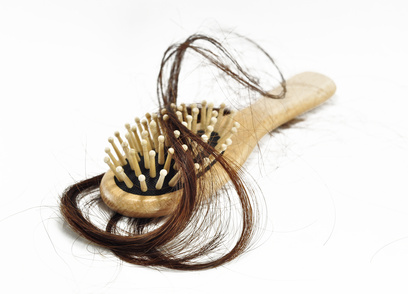
Healthy human beings are constantly growing and losing hair simultaneously, generally we are growing more than we are losing, so we do not notice it. When there is extra ‘stress’ on the body, this can cause a shift in the normal balance and hair loss increases. Two stressors known to do this are major surgery and rapid weight loss. Therefore weight loss surgery is a double whammy! There can also be nutritional causes of hair loss.
Hair loss in the first six months after surgery is generally due to the trauma of the surgery and rapid weight loss. However, if you have a good nutritional intake it will settle and hair will re-grow as weight loss stabilises.
For hair loss that continues for over a year, or hair loss that starts six months after surgery, particularly in people who have difficulty eating or not taking the supplements recommended to them, there may be a nutritional cause. A low Protein intake, Iron or zinc deficiency can all play a role in hair loss.
You may have seen discussion on online forums or discussion groups recommending zinc supplements for hair loss. Interestingly, iron is actually the one nutrient that is most closely related to hair loss. This does not mean that if you are losing hair you should put yourself on iron supplements! Your team should have already recommended a supplement for you containing iron. If a particular supplement is recommended, it is generally recommended for a reason. We recommend supplements that contain more iron than a standard Multivitamin after weight loss surgery. Standard Multivitamins contain very little iron, far less than that recommended after weight loss surgery. You should also be checking in with your team for regular blood tests. Even if it is years since you had weight loss surgery, yearly blood tests are important to check not only your iron levels, but also a range of other nutrients.
As mentioned above, zinc is often associated with hair loss, but again, it is important not to rush out and buy zinc supplements! High doses of zinc can actually interfere with iron absorption and can also cause copper deficiency. Therefore high doses of zinc may actually cause you more problems and there is no solid evidence zinc supplements will fix your hair loss.
Protein, protein, protein! Sometimes it seems that is all we hear about after weight loss surgery. Protein is important for a range of reasons after weight loss surgery, but it seems it is also involved in hair loss. The current guidelines suggest a minimum target of 60g per day. Whilst this can be a challenge, with careful planning it can be done. We will look at how you can make sure you are getting adequate protein in upcoming Member Bulletins.
In summary, don’t try to treat your hair loss without some guidance from your team and blood tests to check your nutritional status. Speak to the dietitian in your team about making sure you are getting adequate nutrition both from your diet and supplements.
-
When embarking on and moving through the life-changing journey of weight loss surgery it is essential you have fair expectations on yourself. Always try treat yourself with kindness and compassion.
All too often I hear stories of extreme guilt related to eating choices – this guilt is not positive or productive and it will not serve you well!
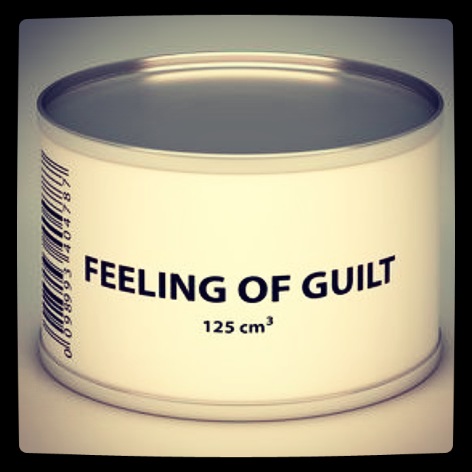
YOU ARE NOT EXPECTED TO BE PERFECT!
There are times you are going to deviate from your intended eating plan and that is ok! Eating is not always about nutrition and weight – it is social, it is enjoyable and it contributes to the quality of our life. Small amounts of indulgent foods eaten slowly and mindfully and truly enjoyed are an essential component of your ultimate success.
However, at times these small amounts may blow out, indulgences may be eaten when you are emotional or distracted and this can leave you regretful. Don’t be too hard on yourself, focus on what you can control and get back on track at your next meal or snack time. Remember each meal is a new opportunity to get it ‘right’, to nourish your body and to achieve your goals.
IT IS ALWAYS ABOUT PROGRESS, NOT PERFECTION
Can you to listen out for any guilty internal thoughts related to your food choices. Imagine saying them to a good friend. Now turn those thoughts around - you can’t change what has happened so focus on what you can control, that is, the very next meal or snack.
It can be useful to ask yourself.
- What were the triggers or events that lead me to make that food choice?
- How can I plan to decrease my vulnerability next time I am in that situation?
Let us know how you go, and remember when it comes to food, guilt is a wasted emotion.
- What were the triggers or events that lead me to make that food choice?
-
Thanks DLCoggin for the feedback.
It is so important to let your internal cues guide you, rather than getting caught up on what you are supposed to eat.
Sally
-
Many of our weight loss surgery clients talk to us about ‘feeling full’. It is common for many clients who we meet prior to having surgery to speak about ‘feeling full on a smaller amount of food’ being one motivation to have surgery. Following surgery, those with a gastric band may often seek further adjustments of their band hoping it will help them feel ‘full’.

Feeling satisfied and feeling full after eating are not the same and it is important to understand the difference.
To eat until satisfied means to eat until you are no longer hungry. You feel you have definitely eaten something, but may not need to eat for a few hours. You could eat more.
Eating until full is like when prior to surgery, you dined out on a delicious three course meal, so tasty you could not bare to leave any on the plate. It may be the feeling after trying to make sure you got your value for money at a buffet, or the feeling after lunch on Christmas Day.
Eating until full after weight loss surgery can cause some discomfort, indicating you have eaten too much. Continuing to eat too much over a long period of time will compromise your weight loss and it can cause surgical complications.
Eating until satisfied will guide the amount of food you should be eating. Whilst serving sizes may have been recommended to you, everyone is different and you need to listen to your internal cues to judge how much is right for you to eat.
People who have dieted for many years may have lost touch with the signals they get when eating. It is important to re-learn how to listen to your body’s signals to judge how much to eat.
The following scale can be useful to help you understand your internal signals and when is the right time to eat and to stop eating. Keep this scale near where you eat. Before you start eating a meal, stop and rate how hungry or full you are. Once you are part way through your meal, pause and consider where you would be on the scale. Do you need to continue, even if you haven’t finished the plate? If you are still hungry, continue eating. Pause again later in the meal and repeat. If you do finish the plate, rate yourself again.
Try this at different meals; breakfast, lunch and dinner. It may take some practice, but is an exercise well worth doing.
Your goal is to start to recognise the point where you reach a 6 – this is the goal.
1. Starving, ravenous. All you can think about is how hungry you are. This is a ‘danger time’ for overeating.2. You may have a headache or feel weak or grumpy.3. You feel like it’s time to eat.4. Your hunger is just starting, but you could wait to eat. Your stomach is starting to feel empty.5. Neutral. Not hungry, not full.6. Satisfied or “just right”. You are no longer hungry, but probably will be in about three or four hours.7. You had a few bites too many. You are a little uncomfortable.8. Full. You definitely don’t need more food.9. Your stomach feels stuffed, uncomfortably full.10. Painful. So full you feel like you could vomit.For some more reading on this topic we highly recommend the work of Dr Rick Kausman and his book, If Not Dieting, Then What? Find out more here.
Let us know how you go finding your number 6 by joining the conversation on our Facebook page.
-
Whilst it is not the most pleasant topic, bowel motions, or lack thereof, are something we are regularly asked about following weight loss surgery.

We often have people tell us they are constipated at their first post-surgery appointment. It is important however to realise that Constipation and slower bowels are two very different things - it’s not how often you go, it is how you go! After surgery, particularly during the recovery stages, the amount of food you eat is far less than pre-surgery. With less food comes less waste, so it is likely you will use your bowels less. As long as you are not uncomfortable, this is not a problem. If your motions are less frequent, hard, dry and you need to strain to pass them, then you are likely constipated.
The ‘key ingredients’ to help manage periods of constipation are:
- Fibre – this helps to bulk and soften bowel motions and move them through the intestine
- Fluid – fibre absorbs Fluid, so if you increase fibre without ensuring your fluid intake is adequate it can make constipation worse.
During the weight loss surgery recovery phases of the fluid and smooth puree diets, it can be a significant challenge to obtain enough fibre and fluid and for many this results in constipation.
Boosting Your Fibre Intake
During the fluid phase:
- Blitz rolled oats and chia seeds in your food processor to form the texture of flour and add to smoothies and shakes. Don’t forget to add plenty of fresh fruit as well.
- Add plenty of vegetables to Soups. Chop up your favourites and blitz in your food processor. Make sure you blend them enough that they could pass through a straw. Onion, carrot and celery work well to boost both the fibre and flavour of almost any Soup.< br>
- Add legumes or lentils into soups to boost both Protein and fibre. Once blended they help make soups creamy and will help keep you feeling satisfied. Chickpeas, bean mixes and lentils all work well.
During the smooth puree phase:
- Introduce porridge or Weetbix® with plenty of low fat milk at breakfast. Sprinkle with crushed seeds and/or try topping with some pureed fruit.
- Add plenty of vegetables and legumes or lentils into stews and casseroles. Remember to blend into a smooth consistency (much like the texture of smooth mashed potato).
During the soft diet phase:
- Naturally soft fruits such as banana, mango, ripe pears and peaches can be reintroduced.
- Well cooked vegetables that are soft enough to cut with a fork can also be enjoyed.
Longer term:
- Remember to focus on wholemeal and wholegrain bread and Cereal products.
- Include fresh fruits and vegetables daily. Include skins where you can , just chew them well.
- Include some regular exercise.
It is important in all dietary phases to focus on your fluid intake – remember to sip, sip, sip and aim for 1.5L of fluid daily.
For detailed information on where to find fibre in foods speak to your dietitian or check out the section on fibre in Your Complete Guide to Nutrition for Weight Loss Surgery.
Need Extra Help?
If you are constipated at any stage, you may find a fibre supplement useful. A soluble fibre supplement such as Benefiber® or Metamucil Fibresure® can help. These products are colourless and tasteless, hence can be dissolved in a range of fluids. They are best taken regularly, with plenty of fluid. They are not likely to be effective taken if you take a random dose once constipation is established.
The following recipe for prune, bran and apple mix can be a useful addition to your diet to improve your bowels. Try adding 1 tablespoon to your breakfast, or with some yoghurt for a high fibre, high protein snack.< /p>
Prune Bran Apple Mix
75g All-bran®
250g Apple Puree or apples, pureed
75g prunes, pureed
50ml orange juice
Blend together adding more juice if required. Freeze in ice cube trays and defrost 1 cube at a time as needed.
If constipation persists, discuss this with your surgical team or GP. Please seek medical advice before commencing laxatives.< /p>
MrsGloMartin reacted to this - Fibre – this helps to bulk and soften bowel motions and move them through the intestine
-
Protein-containing foods help us feel satisfied for longer after eating, which is helpful in managing our weight.
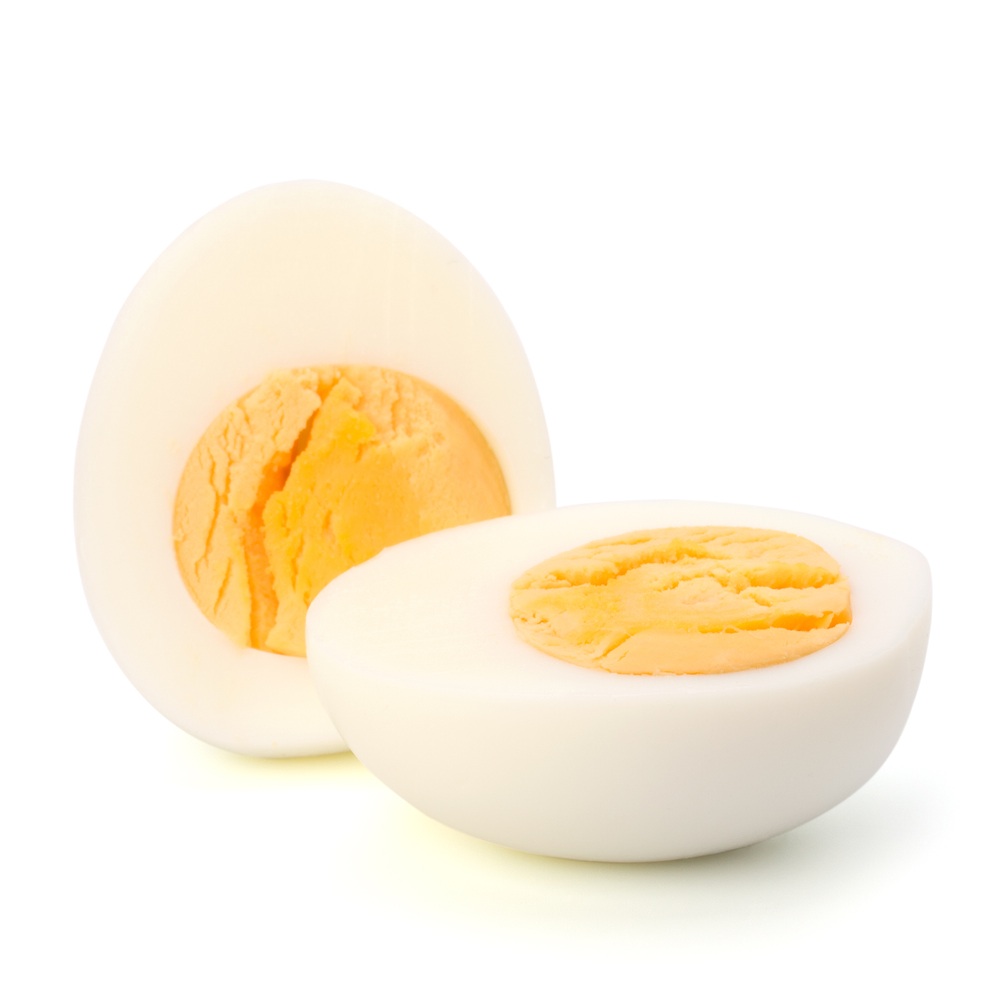
In a previous article I introduced the concept of getting the most from what you are eating, in particular, feeling satisfied after eating. Whilst the purpose of weight loss surgery is to help you feel satisfied on a smaller amount of food, the type of foods you choose is important to help maximise this. There are two key ingredients in helping you to feel satisfied after eating:
1. High fibre, low glycemic index carbohydrate-containing foods
2. Protein-containing foods.
The previous article explored the glycemic index, or GI. This article focuses on Protein. Protein-containing foods help us feel satisfied for longer after eating, which is helpful in managing our weight.
Protein is also involved in many bodily functions including:
-
building and repairing body cells such as bone, hair, skin, nail and muscle
-
producing hormones to help us burn stored energy, including body fat
-
making enzymes to help digest food
-
helping to protect our body against colds, Hair loss, muscle weakness, and fatigue.
Not eating enough protein can result in:
-
a weaker immune system
-
muscle loss
-
hair loss
-
inadequate weight loss.
Why am I at risk of inadequate protein intake after weight loss surgery?
As indicated in the protein counter (on my website), meat products contain the most protein per serve.
An Australian study from The St George Upper GI Clinic in Sydney, Australia, found that those with a gastric band often find red and white meat difficult to tolerate whilst fish was tolerated more easily. Some people who have had sleeve gastrectomy and gastric bypass also reported difficulty eating these foods but it was far less common than it was among those with a gastric band.
Red meat and chicken breast can be more difficult to eat if they are dry, overcooked, stringy, or if they have been reheated. Any meat can be difficult to tolerate if you are not using the correct eating technique. Some people will then avoid these foods, when working on improving eating technique may allow them to eat these foods comfortably.
Food tolerance varies from person to person and is found by trial and error. Tolerance of all foods can be improved by following the correct eating technique as I have discussed previously.
Following all surgeries, you will be eating smaller amounts of food. A reduced intake of food causes a decrease in protein intake. In the early stages following surgery, people who have had a sleeve gastrectomy or gastric bypass are likely to tolerate only very small quantities of food. When you eat your meals, eat the protein-containing food first to ensure you have room for this important nutrient.
How much protein do I need?
There is no one exact recommended protein intake following weight loss surgery. A range of 60-120g has been suggested, however your individual protein needs will vary depending on your age, gender and your particular stage of recovery. It is best to speak to your dietitian about your protein needs. You can then use the protein counter below to see how you can achieve this.
It is easy to confuse the weight of food with the protein content. For example, some may assume 100g of meat provides 100g of protein. This is not the case. Head to my website for a simple table on the protein content of common foods.
Lean protein foods are the best choices, as they are lower in fat, particularly saturated fat. Meat should be trimmed of fat and chicken should have skin removed. Low fat milk, yoghurt and reduced fat cheeses are recommended.
-
building and repairing body cells such as bone, hair, skin, nail and muscle
-
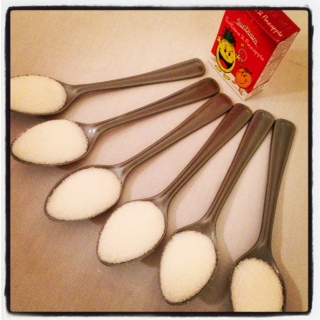
Do you feel like you are doing all the right things with your diet, but still not losing weight? Are you trying to buy all the right foods, but still struggling to see results? Maybe you are being tricked by the Healthy food Frauds.
Last week we appeared in a segment on Today Tonight Adelaide featuring Healthy Food Frauds. You can see the segment
.Healthy Food Frauds are foods or drinks that sound healthy, but contain hidden fats and sugars. Food marketing is big business and food packaging is premium marketing space. Those packages need to convince you a product is going to be appealing – whether that is in the way it makes you feel, or how it nourishes your body. Think of words like natural, whole, earth, Vitamin and baked - they all make a product sound as if it is going to be good for you. Unfortunately this is not always the case!
As you will see in the segment, we poured a decent serve of muesli and showed it contained 10 teaspoons of sugar and four teaspoons of fat! This bowl held about one and a half cups of muesli. Whilst this may be greater than many of you would even contemplate after weight loss surgery, the sugar and fat hiding in there is surprising nonetheless. What may surprise you even more is that eating this bowl of muesli would be like sitting down and eating nine slices of bread!
In researching this segment we investigated a lot more foods than were actually shown.
Here are some other common Healthy Food Frauds we like to expose:
- fruit juice may contain up to 13 teaspoons of sugar in a 600ml bottle you grab at the service station or deli, including the “no added sugar” varieties.
- Muesli bars may contain two teaspoons of sugar and two teaspoons of fat in a small bar.
- Low fat yoghurt may contain up to 6 teaspoons of sugar per 175g tub.
- juice bar smoothies: can easily contain six teaspoons of sugar and 2 teaspoons of fat.
- A bottle of vitamin Water can contain 7 teaspoons of sugar.
- A small, 250 ml coconut water contains 3 teaspoons of sugar.
- A small box of dried fruit, easy to throw in the kid’s lunchbox can contain up to six teaspoons of sugar.
Check out the segment to see more Healthy Food Frauds exposed, it only takes a few minutes.
Making small changes to our daily food and drink choices can make a big difference - the difference between gaining weight and losing weight. By reducing five teaspoons of fat per day, or 10 teaspoons of sugar per day (or a combination of both), you can lose about one kilogram per month. Whilst you may think this seems small, over a year that is 12 kilograms! It really adds up!
-
Clients often tell me one of their biggest challenges after weight loss surgery is eating slowly.
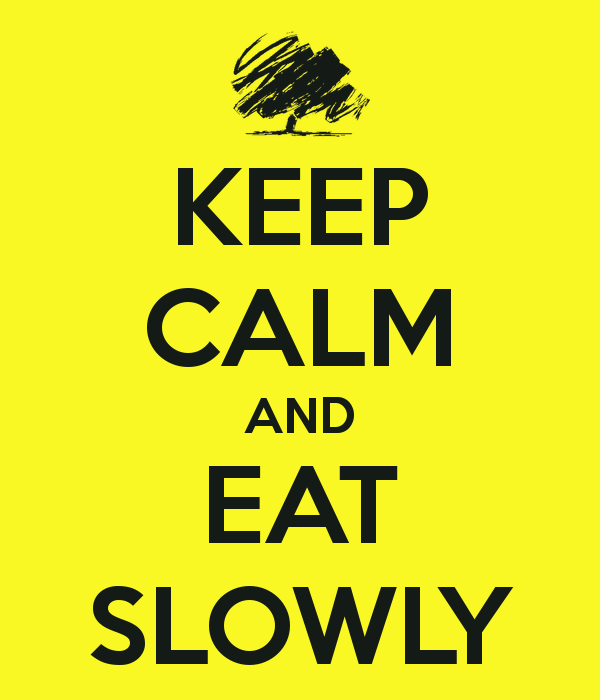
Clients often tell me one of their biggest challenges after weight loss surgery is eating slowly. Eating too quickly means that you are unlikely to chew foods properly. This can cause discomfort, pain and in some cases, regurgitation.
To be able to eat a variety of foods comfortably after weight loss surgery, you really need to concentrate while you are eating. The following tips may help you do this:
- Set aside time for meals and avoid doing other things whilst you are eating.
- Sit up straight and avoid slouching. Sit at the table rather than the couch. Avoid eating whilst preparing food.< br>
- Move away from the television or computer. You cannot focus on what you are eating if you are immersed in something else.
- Avoid playing with your mobile phone or other electronic devices.
- Avoid getting really hungry. The hungrier you are when you start a meal, the more likely you are to eat quickly, take big bites and not chew properly.
- Avoid eating with your hands as you will tend to take bigger bites. Use cutlery to cut food into small pieces. The more pieces you need to cut the longer it will take to eat.
- Avoid eating on the run, or in the car.
- Put your cutlery down between mouthfuls. Wait until you have swallowed your food before cutting the next piece. Avoid having that next mouthful loaded on your fork ready to go.
- If you really struggle to slow down, use your cutlery in the opposite hand until the pace of eating feels more natural.
- Choose a relaxing environment to eat. If the staff room at work is too distracting, head outside to a nearby park. Opt for a quiet café rather than a noisy food court, where you may be tempted to rush.
- Be especially careful when eating socially, as during conversation it is very easy to become distracted. Eat during a break in conversation.
- Avoid the tendency to want to keep pace when eating with others.
Take notice when you do slow down your eating. Do you feel more satisfied? Do you enjoy your food more? Many people report they enjoy food more after surgery as they eat more slowly, allowing them to really taste the food and savour the flavours.
Get in the habit of eating slowly. It could take up to 20 minutes to eat a small meal – between 10 and 20 minutes is a good goal. If there is food left on your plate after this time, discard it. There is a risk of eating too slowly which can turn a meal into grazing, which defeats the purpose of weight loss surgery.
Time how long it takes you to eat your next meal. It may just surprise you!
jmac004 reacted to this - Set aside time for meals and avoid doing other things whilst you are eating.
-
Recently I have found myself spending a lot of time talking with my weight loss surgery clients about getting the most from what they are eating, in particular, feeling satisfied after eating. Whilst the purpose of weight loss surgery is to help you feel satisfied on a smaller amount of food, the type of foods you choose is important to help maximise this.
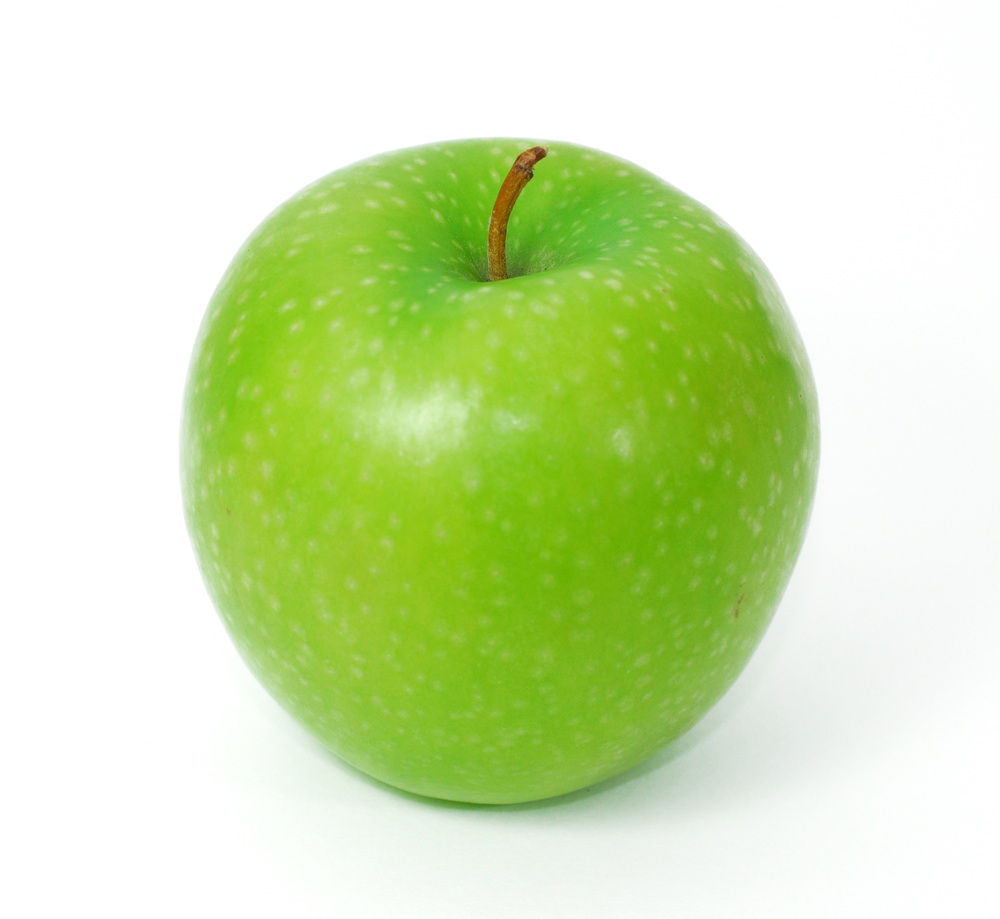
Recently I have found myself spending a lot of time talking with my weight loss surgery clients about getting the most from what they are eating, in particular, feeling satisfied after eating. Whilst the purpose of weight loss surgery is to help you feel satisfied on a smaller amount of food, the type of foods you choose is important to help maximise this.
There are two key ingredients in helping you to feel satisfied after eating:
1. High fibre, low glycemic index carbohydrate-containing foods
2. Protein-containing foods.
This post will demystify the glycemic index, or GI. Protein will be the focus of a later post.
The GI is a measure of the effect that different carbohydrate-containing foods have on blood glucose (blood sugar) levels. It describes the way our body digests and absorbs these foods. Carbohydrate-containing foods include:
-
breads, cereals, rice, Pasta and noodles
-
starchy vegetables including potato, sweet potato and corn
-
legumes including baked Beans, kidney beans, chickpeas and lentils
-
fruits and fruit juices
-
milks, yoghurts, custards and ice cream
-
any food containing flour or sugar.
Some carbohydrate-containing foods are broken down and absorbed quickly, so they raise our blood glucose level faster and higher. These are high GI foods. Other carbohydrate-containing foods are digested and absorbed more gradually, causing a slower, longer lasting rise in blood glucose levels. These are low GI foods. Low GI foods keep us feeling satisfied for longer after eating.
Often people experience a 'honeymoon' period following weight loss surgery, where weight loss seems automatic. Unfortunately this may not last forever and weight regain can occur with all surgeries. Maximising the satisfaction you get from the food you eat is crucial to keep losing weight and maintain that lost weight. A lower GI eating pattern also helps us feel satisfied for longer after eating, which can help with losing weight. For example, if you eat high GI foods at your meals, you are likely to become hungry sooner after the meal than if you eat low GI foods. This can make you more likely to snack and if you have not planned for this, you may be forced to grab something from the biscuit barrel or vending machine.
Appetite control is not the only benefit of a lower GI diet. Research has shown that people eating a lower GI diet can reduce their average blood glucose levels, which is particularly important for people with diabetes. Lower GI foods are often also higher in fibre. A high fibre diet helps prevent Constipation, decreases the risk of heart disease as soluble fibres can help remove cholesterol from the body and helps protect against bowel cancer, haemorrhoids, irritable bowel syndrome and diverticulitis.
Foods are classified as low, moderate or high GI.
To follow a low GI diet, try to choose one low GI food at each meal. Eat high GI foods in small amounts, or less often.
Head to my website to see a simple table of low, moderate and high GI foods.
Go to www.glycemicindex.com for further information.
odesa and BigGirlPanties reacted to this -
breads, cereals, rice, Pasta and noodles
-
@@Band2Sleever Thanks for your comment. I certainly see your point - some foods or drinks have no nutritional benefit or value, so it is hard to see them as a worthy inclusion in your diet. People may choose to include particular foods or drinks for very different reasons.
I want to share an example of one client who grew up in the USA and now lives in Australia. She admits many times leaving her appointments at our clinic and driving home via McDonalds to get a Coke. A regular coke, from the machine, in the paper cup.
This is not because she thinks it is good for her, but it reminds her of home and family that she misses dearly. It is the particular Coke at McDonalds, not that in bottles or cans, that she is genuinely excited to drink and feel a unique happiness when she does.
Whilst she and I both know this is not helping her achieve her goals and offering her no nutritional benefit, that Coke serves an extremely valuable role in my client's diet.
Rather than condemn her for choosing to include the Coke, I accepted it and focused on helping her with what she was able to change.
At our last appointment she told me she had not had the Coke for months.
 Band2Sleever reacted to this
Band2Sleever reacted to this -
I could not agree more 2muchfun! Well said!
-
In talking with clients I am constantly reminded of the dietary myths that circulate to leave people confused about weight management. Here I bust some of my favourite weight management myths.
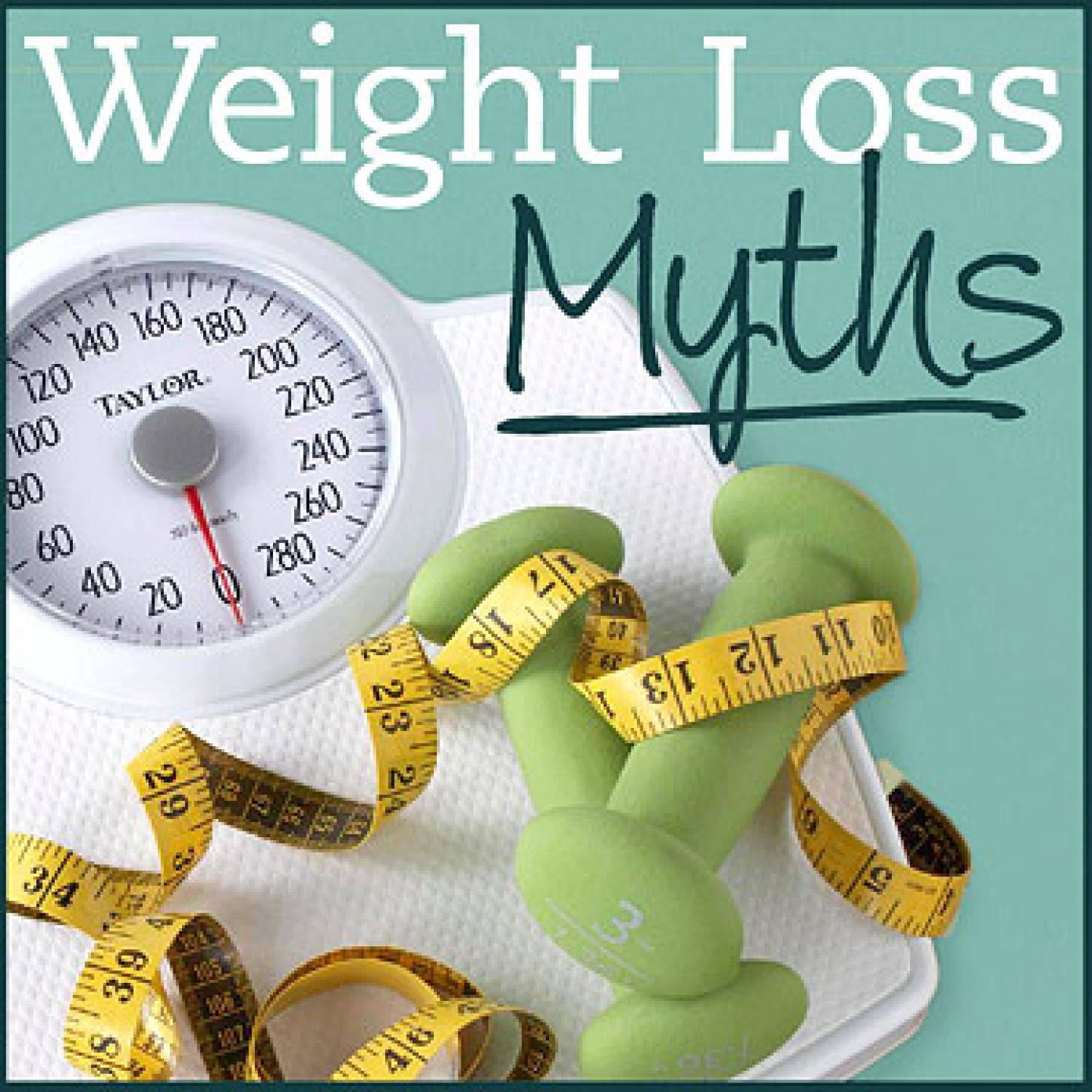
Myth 1: Don’t eat after 7pm (or 7:30pm or 8pm, etc)
Our body doesn’t switch off at night. Our metabolism continues ticking over as our heart pumps blood, our lungs breathe, our muscle tissue repairs, etc. This happens all day and all night. In fact, we burn calories when we are sleeping, just as we do when we are awake. Our metabolism does not shut down at 7pm, so there is no reason to stop eating at any one particular time.
It is important however not to leave all of our eating until the evening. We should fuel our body regularly throughout the day so that it can perform at its best. This is even more important following weight loss surgery, as you can no longer eat the size of meals you once did. Therefore, you can’t skip your meals during the day and expect to meet your nutritional needs at night. Regular meals throughout the day are also important to control your hunger. Being ravenous at the end of the day is another trigger for overeating late at night.
Some people find rules that they should not eat after a particular time at night appealing, as this is when they tend to overeat. Overeating at night can act as a ‘reward’ for getting through the day, or as a way to relax and wind down. It may be habit as we watch TV or a movie. This is when night eating is problematic, as it is not eating for hunger. Do you eat for reasons other than hunger at night? What else could you do to relax? Could you sort through those photo albums that are overflowing, have a bubble bath or phone a friend you haven’t spoken to for sometime. What about a jigsaw puzzle, a crossword, scrapbooking, sketching or even an evening walk? The options are endless.
Myth 2: There are good foods and bad foods
food is neither good or bad, it is what we do with it that counts. Of course, some foods are high in energy (calories/kilojoules) and have little nutrition, so these should be eaten in small amounts. However, food itself is morally neutral. We assign it the ‘good’ or ‘bad’ label, or define it as ‘allowed’ or ‘not allowed’. By labeling food in this way, we are then ‘good’ or ‘bad’ if we eat it.
A better view of food is one where all food is morally neutral. You have permission to eat any foods you choose, you can choose eat those that are more nourishing, most of the time. I often say to clients that there are 21 meals in a week, if one or two are not perfect nutritionally, it is not a problem. If the balance is reversed however and only one or two are nutritious, then this is not going to help you achieve good health.
Some foods that provide little nutrition may provide much enjoyment, so may play a very valuable role in your diet in other ways. You can and should include foods that give you pleasure, it is managing the amounts of these foods that are important in achieving good health.
Myth 3: Carbs are fattening
Nothing is fattening in isolation. Anything can be fattening if you eat too much of it. Food is made up of combinations of carbohydrate, Protein, fat, Vitamins, minerals, fibre and Water. Carbohydrate, protein and fat provide energy, the other nutrients do not.
If we look at the nutrients that provide us with energy in their most simple form:
• Carbohydrate contains 4 calories per gram
• Protein contains 4 calories per gram
• Fat contains 9 calories per gram.
Whilst not a food, alcohol contains 7 calories per gram
As you can see, carbohydrate itself is quite low in calories. So why does carbohydrate have such a bad reputation?
The problem with carbohydrate containing foods is the way we have come to serve and eat them. We heap rice, Pasta and noodles on our plates, leaving very little room for protein foods but more importantly, vegetables and salads.
Low glycemic index, carbohydrate-containing foods can be quite nutritious and when eaten regularly, in appropriate amounts, help us manage our hunger through the day. We just need to look at how we serve them. For example, rather than serving spaghetti bolognaise as a plate or bowl of pasta topped with a little meat sauce, serve equal amounts of meat sauce and pasta on half the plate with a side salad on the other.
Myth 4: You can do some extra exercise to compensate for eating ‘bad food’
The problem with this myth is that is feeds into the ‘good food’ and ‘bad food’ myth. If exercise is something we do when we eat ‘bad food’, exercise is seen as a punishment. Exercise can help you feel good, help you sleep better, give you more energy and help you become healthier. It should be enjoyed for these benefits.
Myth 5: You need to eat every 3 hours to keep your metabolism up
Every body is programmed differently and will have a slightly different metabolic rate. Some bodies will need to be fed more frequently than others. If we set a basic meal pattern, our body will let us know how much we need to eat.
If we provide our body with appropriate fuel three times a day, it will then let us know if we need to eat more often, we just need to tune into the signals. If we start the day with breakfast, our body is given the signal we are starting the day and can help regulate how much we need to eat through the day.
You may have heard a ‘rule’ after weight loss surgery to eat only three (or less) meals per day. I strongly believe that there is no one rule that fits every person. The only way you can tell if you need to eat between meals is to tune in to your hunger and satiety signals. If you are genuinely, physically hungry between meals it may be fine to have a small snack. If you are eating as you feel bored/tired/frustrated/lonely or simply watching the clock, then you need to work on another solution.
Myth busting your way to success
Whilst the internet has brought a whole world of information to our fingertips and can help share dietary fact, it has also perpetuated lots of dietary fiction. Think about some of the food facts you have come to believe over time. Write them all down and take them along to the dietitian in your weight loss surgery team. They will help you sort the fact from fallacy.
-
Thanks to you all for reading and more importantly, for sharing your experiences. I enjoy learning more and more from people living with weight loss surgery. Sally
-
Last year I asked my Facebook followers the foods that were always on their shopping list since having weight loss surgery. Read more about their responses.
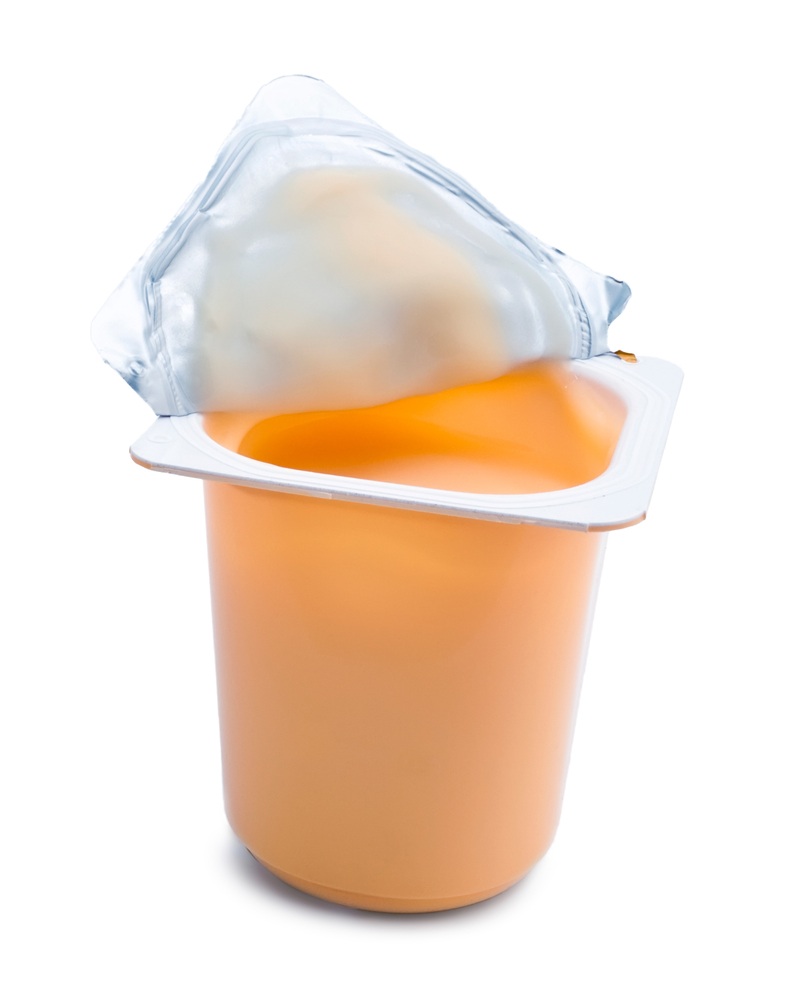
Last year I asked my Facebook followers the foods that were always on their shopping list since having weight loss surgery. Following were the most common responses:
-
yoghurt
-
mince
-
avocado
-
eggs
-
porridge
-
cottage cheese
-
low fat ice cream.
What do you notice about this list? What do all these foods have in common? They are all ‘easy to eat’ foods.
This theme resurfaced in a similar conversation I observed recently about crackers. Following weight loss surgery, some people prefer to choose crackers over bread. It seems that easy to eat crackers, the ‘puffed’ varieties that dissolve in the mouth like Cruskits™, are a popular choice. You can eat them more easily, allowing you to also eat more of them, than a more challenging and nutritious cracker, like a grainy Vita-weat® or Ryvita®. So why are you choosing easy to eat foods?
The purpose of weight loss surgery is to feel satisfied on a smaller amount of food, preferably nutritious food. So I ask, what would make you feel more satisfied? Taking time to chew, chew, chew through the higher fibre, more nutritious, grainy Ryvita® or Vita-weat® crackers? Or taking half the time and effort for the Cruskits™ to dissolve in your mouth after a quick, half-hearted chew? It is an experiment worth doing. Perhaps also note how many of each of the crackers you need to eat to feel satisfied, as well as how long you remain satisfied after eating them.
In the hundreds of weight loss surgery clients I have seen I have noticed that after recovering from weight loss surgery some people never really progress past the ‘soft food’ stage of mornays, stews, casseroles and mince dishes. Or, they progress onto more solids foods but gradually slip back in to these softer, easier to eat foods, particularly those with a gastric band, as their band is adjusted and becomes tighter. I recall conversations with clients telling me they prefer the soft foods as they are “easy” and they “can eat more”. However, when we discuss this further, their true hunger is satisfied just as much on a smaller serve of a food, which is more challenging to eat. Eating larger amounts of soft, sloppy food or easy to eat, ‘dissolvable’ food is eating to satisfy our eyes, rather than our true hunger.
I am fully aware that some people with a gastric band have difficulty eating particular foods. I also believe however that there are thousands of people with poorly managed gastric bands that are not able to eat healthy, solid food. Unfortunately there is a misconception with gastric bands that tighter equals better, and that regurgitation is normal. Whilst I have no scientific studies to back this up, in my work the people I see who successfully lose and maintain their lost weight with a gastric band are those who can eat a good variety of solid, healthy foods, not those who must survive on Protein Shakes, Soups and juices as their band is too tight to eat anything else. If you can’t eat a range of healthy foods please speak to your team, or get a second opinion. It may be that you need to work on your eating technique, or you may need some medical intervention.
Unfortunately the perception that easy to eat foods are necessary has become quite widespread and is not only confined to the gastric band community and with many online weight loss surgery communities these beliefs spread.
Are you choosing easy to eat foods out of habit? Could you eat more challenging foods that will satisfy you more? Consider this ‘food for thought’ as you move forward on your journey.
-
yoghurt
-
Sleeve gastrectomy surgery reduces the size of the stomach by stapling along its length to form a long tube that looks similar to a banana. The majority of the stomach is then removed and discarded. The new banana shaped stomach is long and thin hence is often referred to as a ‘sleeve’.
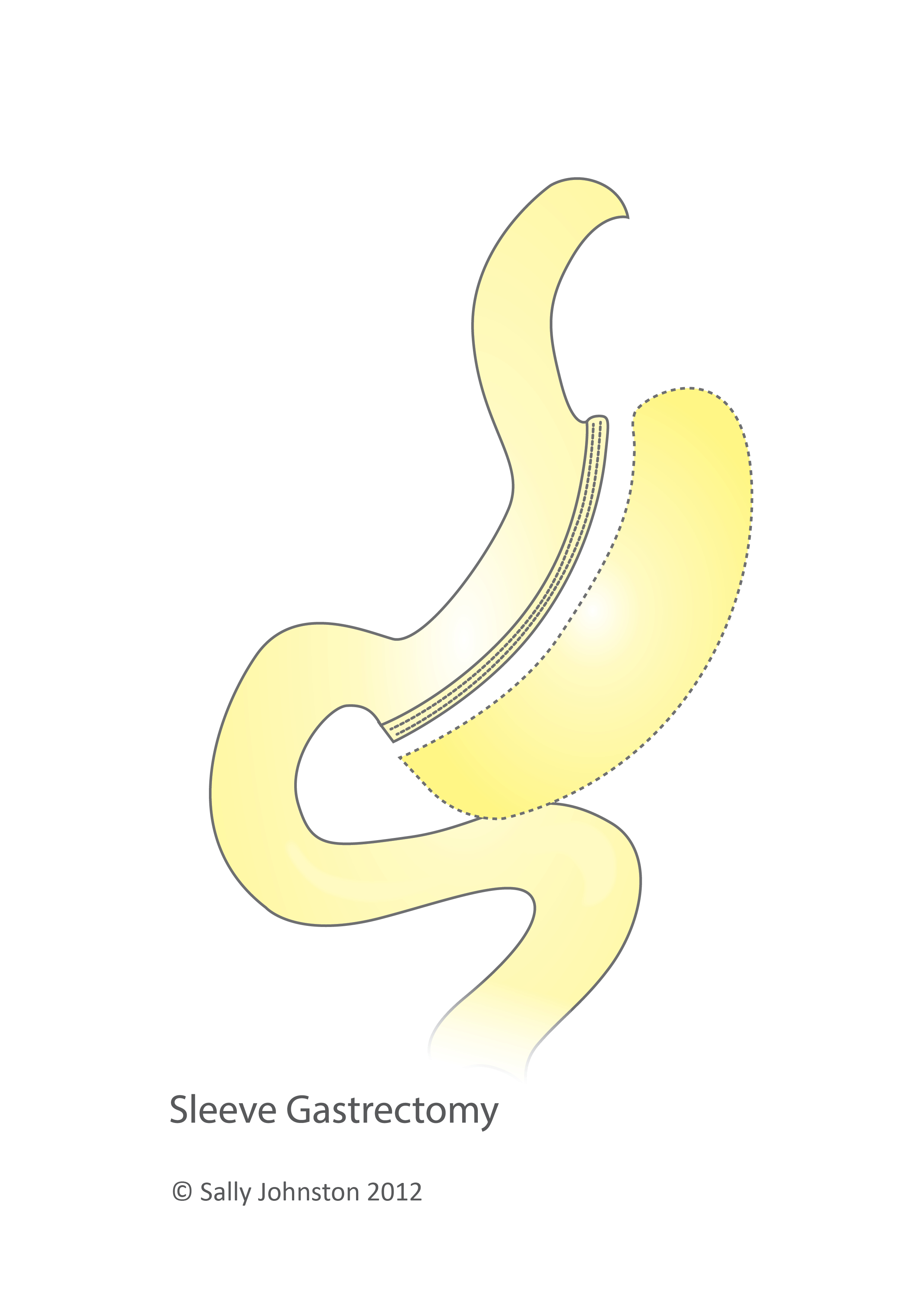
Sleeve gastrectomy surgery reduces the size of the stomach by stapling along its length to form a long tube that looks similar to a banana. The majority of the stomach is then removed and discarded. The new banana shaped stomach is long and thin hence is often referred to as a ‘sleeve’.
About 80-90% of the stomach is removed making it much smaller, hence it holds much less food than it did previously. This smaller stomach helps you feel satisfied after eating a small amount of food. In addition, the part of the stomach that is removed is the part that secretes much of the hormone called ghrelin, which is involved in stimulating appetite. It is thought that producing less ghrelin further helps to reduce hunger after surgery. Although ghrelin levels start to rise again after surgery, they don’t seem to return to their previous levels and so hunger is more easily satisfied.
Unlike the adjustable gastric band the sleeve gastrectomy is not reversible. The stomach may stretch, or adapt to fit a little more food, but it cannot grow back. A sleeve gastrectomy therefore is a commitment for life.
As you will be eating less after sleeve gastrectomy, making the most of your food choices is important to help you obtain all the nutrients required for good health.
Following a sleeve gastrectomy most people will lose most of their excess weight in the first year. After this time weight loss often stabilises, so make the most of this period by making good food choices and regular physical activity a habit for life. After the first year, your ongoing success will depend on your efforts to change your lifestyle and maintain these habits in the long term.
Whilst the size of the stomach changes after surgery, the type of foods that can be eaten does not. Choosing high-energy (calorie or kilojoule) foods regularly will hinder your progress. As with other types of weight loss surgery, snacking or grazing, lack of physical activity and poor food choices can lead to weight regain. Positive, lifelong changes to eating and physical activity will ensure your long-term success.
Poor food choices can also cause dumping syndrome. Dumping syndrome had been thought to occur only following gastric bypass surgery, however it has been seen following sleeve gastrectomy surgery. Avoiding fatty or sugary foods will help prevent dumping syndrome. We will discuss dumping syndrome in a coming edition of the newsletter, but for now you can see a simple explanation here. Avoiding fatty or sugary foods will help prevent dumping syndrome.
A 2011 study found that those who had regular follow up after sleeve gastrectomy achieved better weight loss, health improvement, quality of life and food tolerance, than those who did not. Your support team is there to guide you to acheive the best results following surgery, so make the most of the team and keep in touch! They have all sorts of hints and tips to help you achieve success on your weight loss journey.
-
Hi B-52,
I have not had weight loss surgery. I am a dietitian who has worked with hundreds of weight loss surgery patients. I synthesise the learnings from the most recent medical literature with my clients experience to provide advice, support and guidance.
Thanks for reading,
Sally -
-
I have found that sadly there are a lot of misconceptions around gastric bands. In this article I want to explain how a gastric band really works, as shown by properly controlled research studies.
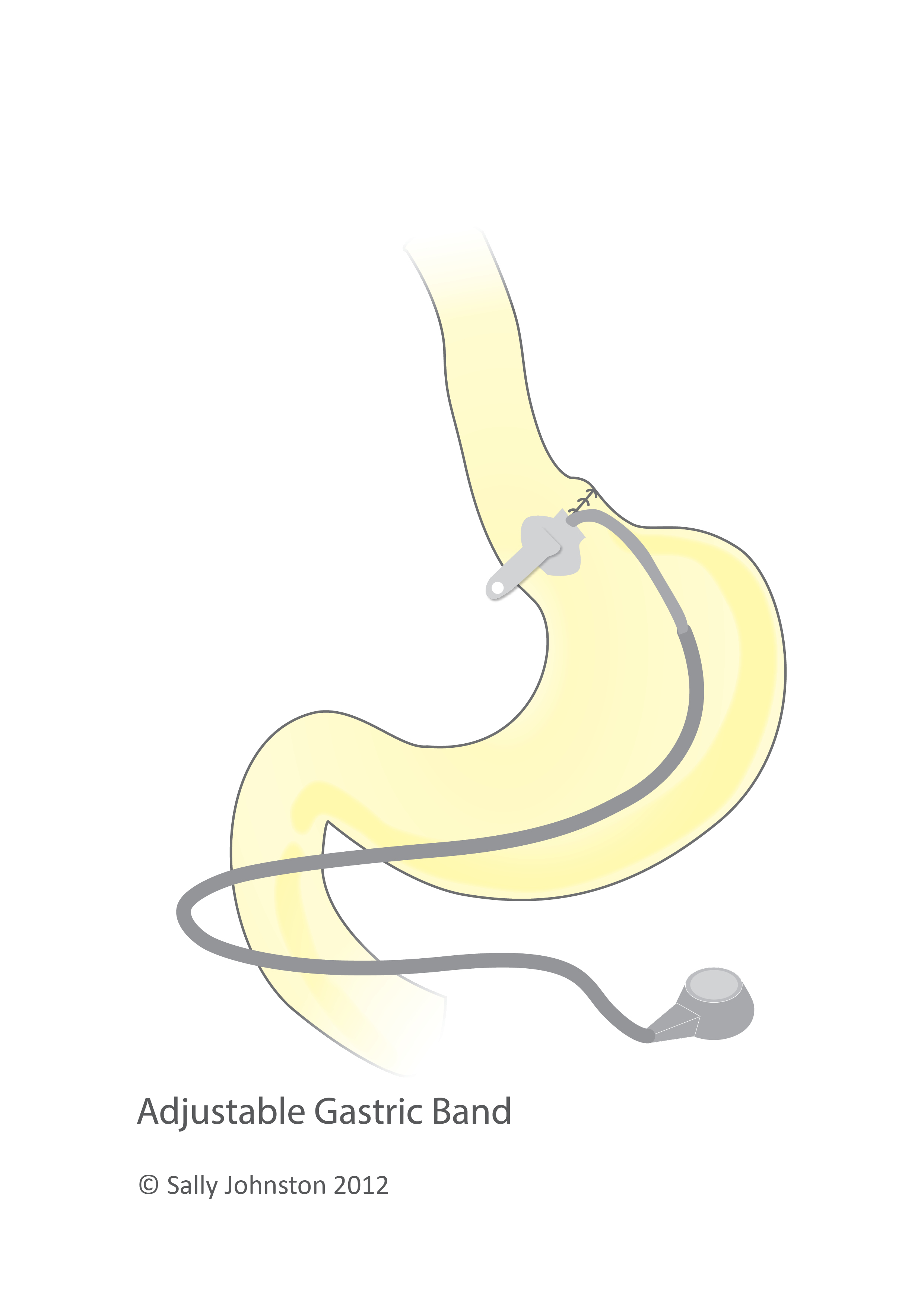
I have found that sadly there are a lot of misconceptions around gastric bands. Firstly, there is a misconception that the gastric band creates a small stomach that must be ‘filled’ to feel full. There is also a misconception that a tighter band will result in more weight loss and that the vomitting or regurgitation caused by a tight gastric band is ‘normal’. Another misconception is that you shouldn’t be able to eat certain foods with a gastric band.
Let’s get back to basics to understand how a gastric band should work. A gastric band is a silicone device placed around the upper part of the stomach. It was once believed that the gastric band created a new, smaller stomach above the band, where food would sit before passing into the lower, larger stomach. Recent studies at the Centre for Obesity Research and Education (CORE) in Melbourne have shown this to be incorrect.
The gastric band actually creates a ‘funnel’ into the larger stomach and exerts pressure on the stomach. Adjusting the gastric band can vary this pressure. The band has an access point called a port, which is stitched to your abdominal muscle deep under the skin. You can usually tell where the port may be as it is likely to sit somewhere under your biggest scar. Your surgeon or weight loss GP uses the port to adjust your gastric band and vary the pressure it places on the stomach. They can inject or remove saline (a salty water) solution via the port to make your band tighter or looser.
When food is eaten our oesophagus, or food pipe, squeezes bites of food down towards the band. Once food reaches the band, contractions of the oesophagus, called peristalsis, will squeeze well-chewed food past the band. In a person with a well-adjusted band, it can take between two to six squeezes of the oesophagus to get a bite of food across the band. One study suggests this process takes at least a minute.
There are nerves in the stomach that detect when our stomach is stretching, and send a message to our brain that we have had enough to eat. One particular nerve involved in controlling our stomach is called the vagus nerve. With a gastric band sitting around the stomach this squeezes the vagus nerve all the time, and more so when you are eating.
The squeezing process triggers a signal to the brain that you are satisfied, or no longer hungry. This means you feel satisfied on a smaller amount of food than you would have prior to surgery. The constant pressure of the band on the stomach also helps you to feel satisfied for a longer period of time, reducing hunger throughout the day.
Feeling satisfied is different to feeling ‘full’. Feeling ‘full’ means you have eaten to excess. It may indicate food is sitting above the band, either due to eating too quickly, eating large pieces of food or not chewing food well enough. Try to stop eating when you feel satisfied or no longer hungry, rather than full.
Each bite of food must be small and well chewed. An empty, or uninflated band has an opening the size of a twenty-cent piece. A fully inflated band has an opening the size of a five-cent piece. Most people will have their band adjusted somewhere between the two sizes. If you cut food into the size of a five-cent piece size and chew it well, it is more likely to pass comfortably through the band.
Eating slowly also helps you to eat comfortably. In theory, you should aim to wait a minute between each mouthful of food, however it is not practical to time every mouthful. It is practical to put your cutlery down between mouthfuls and wait until you have swallowed before cutting the next piece of food ready to eat. People with a gastric band who eat quickly, describe a feeling of discomfort in their oesophagus, like a ‘traffic jam’. Eating slowly will help avoid this.
I hope this clarifies how a gastric band works and what you should experience. If your band is not acting like it should, please follow up with your support team.
☠carolinagirl☠ and JOANNE M HOLL reacted to this -
Thanks you for your comments, I'm glad you enjoyed the article. It gives me motivation to keep posting articles when I hear people find them useful.
Your in good health,
Sally
☠carolinagirl☠ reacted to this -
Surgery itself is just one part of the picture of weight management. Surgery alone does not guarantee you will lose weight; it is a tool that can assist you to lose weight when teamed with lifestyle change.

Both professionals in the field and those who have had or are considering having surgery themselves seem to be involved in an ongoing debate over what is the best type of weight loss surgery. The three most common forms of surgery in Australia at present, gastric band, gastric bypass and sleeve gastrectomy all have loyal fans and big opponents. In my Nutrition for Weight Loss Surgery Support Group the pros and cons of the different surgery types are regularly discussed by those who have been through the various procedures.
Whilst technically different, what is common to all forms of weight loss surgery is that the surgery itself is just one part of the picture of weight management. Surgery alone does not guarantee you will lose weight; it is a tool that can assist you to lose weight when teamed with lifestyle change.
Colleen Cook is a successful weight loss surgery patient from 1995 and is the author of the best selling weight loss surgery book, The Success Habits of Weight Loss Surgery Patients. It is based on her research of the most successful long-term patients and the habits they have in common as they maintain their weight over time. Colleen is also the President of Bariatric Support Centers International, a company that specialises in providing education and support services for those who have had weight loss surgery and the professionals who work with them. Following is a comment from Colleen that stood out to me when reading her work recently:
“Successful patients took personal responsibility for staying in control. They were found to have a general feeling that maintaining their weight was indeed their own responsibility and that surgery was a tool that they used to reach and maintain a healthy weight.”
Colleen’s words illustrate perfectly that weight loss surgery itself does not cause weight loss. Those undergoing weight loss surgery will need to take responsibility for their lifestyle choices. To achieve the best weight loss results and maintain that weight loss in the long term, you will need to choose healthy and nutritious foods, increase physical activity and maintain regular follow up with your support team.
Are you maximizing the support available to you? Do you regularly follow up with your surgeon or bariatric GP to check your progress? For those with a gastric band, have you worked with them to find the green zone? Have you had the blood tests recommended to you to monitor any medical conditions or detect nutrient deficiencies? Have you seen an exercise physiologist or physiotherapist regarding an activity program tailored to you? Did you see your dietitian for the pre and post surgery info but never returned for ongoing support? Are you comfortable with the support team at your clinic? If not, you need to seek out a new support network. Ultimately it is up to you to utilise the support and resources available to you for a successful journey,




Eating: The Rules of Engagement
in Weight Loss Surgery Magazine
Posted
Last month in our Members Only Facebook Support Group we asked members if they eat their meals at the table. This prompted some fascinating and insightful discussion!
Lots of people were eating away from the table on a regular basis, eating everywhere from in front of the TV to in bed. Of course there are occasions where this is completely appropriate, such as Breakfast in bed on Mother’s or Father’s Day, or pizza in front of the footy on grand final day. However, when this is happening more often than not, it is difficult to be mindful and eat in response to your body cues. Boundaries are merged and eating flows over into times not meant for eating. This can result in over eating and poor weight loss.
After reflecting on the comments from our members, we wanted to break the concept of mindful eating down to some basic ‘rules of engagement’ to help you improve your eating habits and achieve your goals.
So what do I do?
Over the next month, try following these ‘rules’. Like most rules there is room for flexibility; as an adult you know when a rule doesn’t work for you, or when it is time to bend it.
Remember, aim for progress not perfection. Good luck, and let us know how you go.
As always, be kind to yourself.